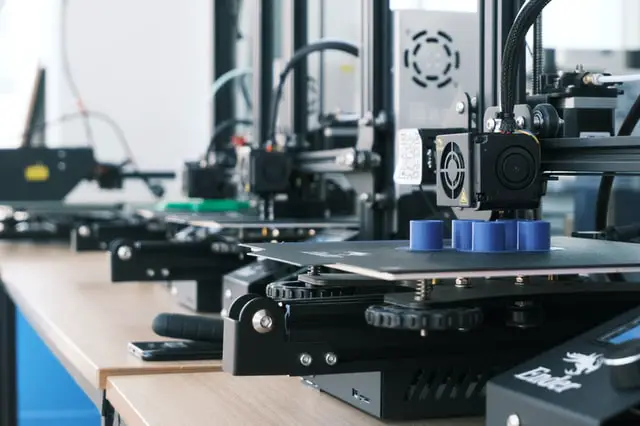The manufacturing industry is a very competitive global market. There are many factors that go into the success of a company in this sector, and one of them is equipment effectiveness. This refers to how well equipment performs over time and how much productivity it generates from the input it receives. The more efficient your machines are, the more productive they will be at creating goods or services for you to sell, which means higher profits for you as well. So what can you do to keep your equipment up-to-date with today’s technology? Read on!
1) Keeping Your Equipment Up-To-Date
One of the most important things you can do as a manufacturer is to keep your equipment up-to-date. This means making sure that the machines you are using are incorporating the latest advances in technology. The manufacturing sector is always evolving, so it’s important to stay ahead of the curve. If you’re not doing this, then you’re at a disadvantage compared to your competitors. Updating your equipment can also help improve your overall equipment effectiveness (OEE).
OEE is a measure of equipment effectiveness, which refers to how well equipment performs over time and how much productivity it generates from the input it receives. An OEE formula helps you understand the overall performance of your plant, but OEE is not just limited to your plant. OEE can be used for machines, departments within a plant, or even an entire company network. OEE has three key components: Availability: How long is the machine turned on and available for production? Performance: How productive is the machine? Quality: How many defects did this machine produce over its operating period?
2) Ability To Track and Analyse Where Losses Occur
OEE is a great way to analyze equipment effectiveness because it shows how many losses are occurring on each piece of machinery throughout all phases of production. The results of the analysis will help manufacturers gain insight into what specific issues are causing lower performance or higher costs in order to increase productivity.
OEE allows for overall performance comparisons by using the simple equation where it compares availability, performance, and quality. This makes it easy for manufacturers to keep track of their operations across multiple plants and facilities without having to develop complicated formulas themselves. Overall equipment effectiveness is very important when it comes to the day-to-day operations in any company looking to maximize its efficiency while keeping costs low. In order to have a successful business, you need to make sure that your equipment is running at its best so that you can stay ahead of the competition. Updating your equipment is one way to do this, and using OEE as a benchmark will help ensure that you’re making the most of your machines.
3) How to Make Performance Gains Using OEE
Now that you know what overall equipment effectiveness is, let’s talk about how you can increase your OEE. One way to do this is by using data-driven approaches to make it easier for managers to understand where their losses are occurring in real-time. Generally, the most important areas to focus on when trying to improve OEE are downtime and changeover.
Downtime occurs when a machine is waiting for input before it begins working again, which means that the machine isn’t producing anything during this period. Changeovers occur when a machine has been turned off or taken offline for some kind of maintenance or repair and then needs to be restarted upon returning back online. Both problems cause unnecessary delays and decrease productivity. The best way to combat these problems is by using OEE data to find and fix the root causes of these losses.
Once you have identified where the losses are occurring, you can then put in place corrective actions to improve performance. This might involve making changes to your processes, improving training for operators, or investing in new technology. Whatever the case may be, make sure that you are taking a data-driven approach so that you can accurately measure the results of your efforts.
4) Burdensome Machinery Could Be Costing You More Than You Think
One thing to keep in mind when it comes to OEE is that all of the equipment used throughout your production network needs to work properly so that you can boost overall productivity. It doesn’t matter how useful or advanced technology maybe if your machinery isn’t working the way it’s supposed to be. This ultimately ties into maintenance and repairs, both of which decrease overall equipment effectiveness.
One study found that companies neglect machine maintenance because they don’t know where losses are occurring. There are three main factors that affect performance: availability, quality, and yield. These problems increase costs and ultimately drive away customers due to lower output rates leading to a backlogged supply chain which results in a backlogged workflow. Showing you where the major losses in performance occur through OEE will allow manufacturers to boost productivity and cut down on high costs.
Overall equipment effectiveness is a great way for managers to identify problems throughout their entire production network, allowing them to take proactive measures which could ultimately increase their business’s overall efficiency. In order to work at full capacity, machinery needs to function properly so that downtime and changeover are kept to a minimum. Updating your machines with new technology can also help improve performance, or it may be necessary to invest in more advanced machinery altogether. But the biggest benefit of OEE is taking a data-driven approach and using it as a benchmark to reduce any unnecessary costs and increase productivity.
Manufacturing is a competitive global market. In order to be successful, companies in this sector need to keep their equipment up-to-date with the latest advances in technology. This not only helps improve overall equipment effectiveness (OEE) but also helps increase productivity. OEE is a measure of how well equipment performs over time and how much productivity it generates from the input it receives. By using OEE, manufacturers can better understand their losses and pinpoint areas where they need to improve. OEE is a metric used in the overall equipment effectiveness index, which measures how well equipped a company’s machines are to produce based on four different variables: availability, quality, energy consumption, and machine performance.








